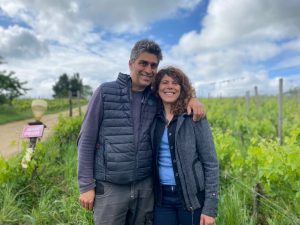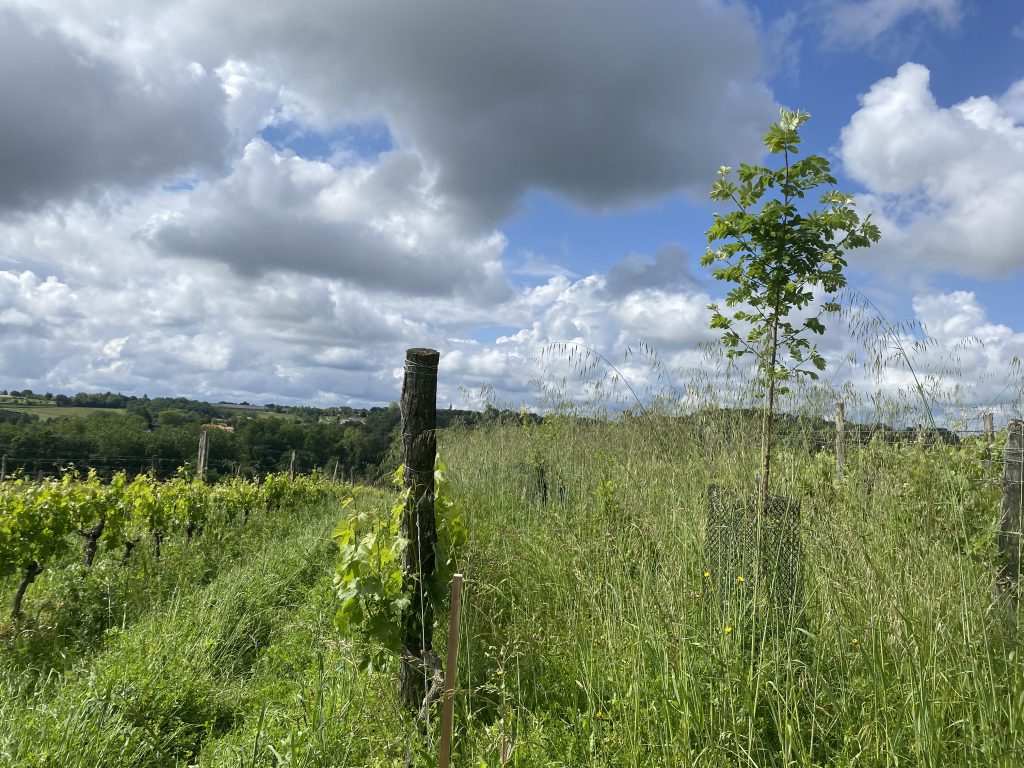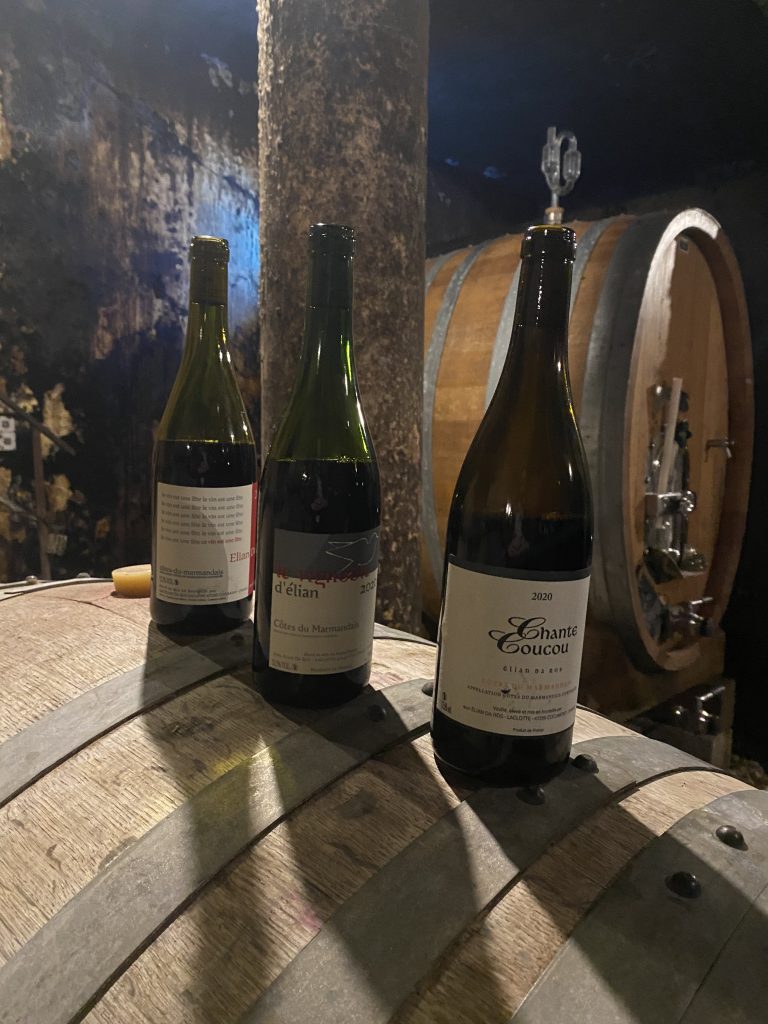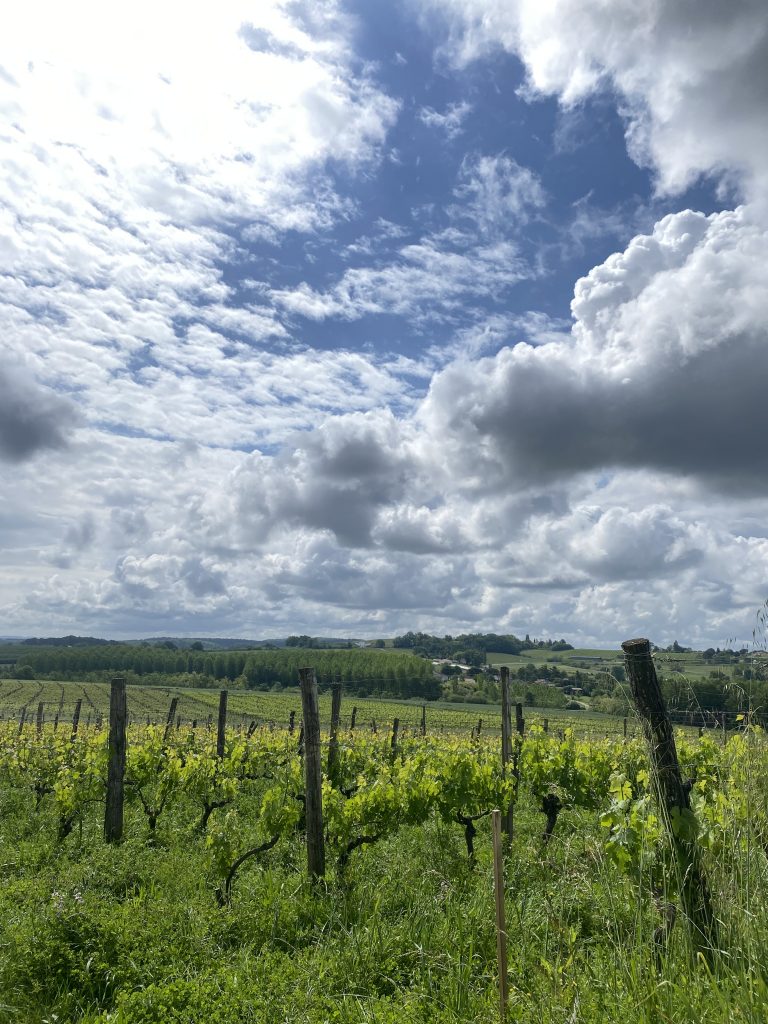A Deep Dive In Soil Management and Crop Production at Elian Da Ros
Mid-May 2023: Between two thunderstorms, we had the opportunity to travel south to go visit the estate and winery of Élian Da Ros. Upon arrival, we were enthusiastically greeted by Élian and Sandrine, who were very eager to share with us the evolution that had taken place over the past few years.

About five years ago, after having been at the estate for over a decade, Sandrine signed up to an agronomy class and started studying the subject in-depth. The course emphasized agro-ecology, and quickly drew in Élian as well. Organic and biodynamic practices have always been central to the viticultural approach; Élian was always mindful and attentive to the land that he works. Though rigorous and committed, this approach was more intuitive than methodological. They had never, for example, practiced trimming, and “I don’t want my head chopped off three times a year” was what Élian would say about it. Sympathy with the vine proved empirically beneficial, but they did not grasp the underlying principles at the time.
This deep dive in the study of crop production and soil management allowed them to gain a broader and more coherent vision of the work at hand. It was as if all of their practices up to that point were spread-out pieces of a puzzle they now know how to go about assembling. Years of farming according to their common sense set them on a path that they can now deliberately follow. In their practice, what amounts to relatively small corrections is in fact a remarkable change reaping impressive results.
Sandrine explains to us that the practice of organic agriculture, while significantly reducing harm to soil and environment, as well as promoting healthy biodiversity, remains a prescriptive set of measures that is narrowly focused on the specific crop being grown. Effectively, organic farming is a valuable set of tools to vitiate the ills of conventional farming, but does little to reevaluate its premises and reframe pre-established practices. Narrowing one’s sights to the crop, it’s entirely possible to feed the plant with organic fertilizer, eliminate disease without synthetic treatments, and still be working on a destitute soil. “You might as well be working in hydroponics,” she exclaims.
She believes that there is a certain complacency when one adopts qualifiers like “organic,” “biodynamic,” “natural.” It becomes too tempting and easy to gloss over the very starting point: agriculture is a human space that is broken off from the living natural system, and the aim is to allow this break to happen without shattering the whole, and today, that means working towards healing the existing cracks. To do so means to acknowledge a complex set of processes, and at the Da Ros estate, it means to shift from “nurturing the vines” to “nurturing the land.”
Since Élian and Sandrine made that decision, they are no longer tilling the soil. Tilling is a common and recommended organic practice to help suppress weeds and pests, as well as incorporate cover crop residues and stimulate nutrient release for the vines. By shifting their focus from the vine to the land, they’ve started roller-crimping, that is, breaking the cover crops and leaving them to create a mulch. Sandrine notes that timing is of the essence: cutting them while they are still in their growth period will drain the soil of nitrogen even more as they will keep fighting to grow back. Alarming as it may seem to watch grass grow so tall, waiting for the right time will allow the soil to stay rich, and cutting them when their growth period is over will allow a mulch to be created that will decrease hot summer soil temperatures, conserve soil moisture, decrease soil erosion, and add organic matter.

“We landworkers are bellwethers of the landscape,” remarks Sandrine. The parcels are very fortunately surrounded by several woods, but that hasn’t stopped her and Élian from endeavoring to plant as many trees and bushes as they can. Trees will help mitigate the drastic effects of wind and help regulate temperatures, and along with bushes will create more energy and nutrition going into the soil through photosynthesis. There is likewise water in the area, but careless treatment of the soils through conventional farming drains it immediately into the sea. In an attempt to remedy that, Sandrine and Élian have dug some ponds, where canes have started growing, and they’ve planted some willow to help draw moisture to the parcels. Increasing the amount of plants and growth also increases the quantity of morning dew, an often overlooked, but important contributor of water. This year alone, they’ve planted 1.4 km of rows of trees. There is no parcel without a surrounding landscape, and there is no micro-climate isolated from a broader climate, and these act reciprocally on one another.

Sandrine is keen to share their work and their findings with other winemakers and, early this year, started organizing conferences and workshops along with other winemakers of different regions, from Chablis to Tavel and beyond. All of this acquired practice is now also being applied to two new parcels, on which vines have just been planted. The parcels, adjacent to a Natura 2000 conservation area, will produce Cabernet Sauvignon and Sauvignon Blanc. There’s a pond nearby with more canes growing, and there are tall posts where bats can find a place to rest. The plots are teeming with life, and the resulting grapes are going to create two new, as of yet anonymous wines, for the higher end of the Da Ros range.
By Patrick Eid and Ryan Lim (Edited by Vicki Denig)
Additional notes:
- Soilless culture is not eligible for organic certification in the EU. It is however eligible for organic certification in the USA, following a court decision as recent as September 2022
- For a review of the vast effects that dew and fog have on plants and the ecosystem, cf. Dawson, T.E. and Goldsmith, G.R. (2018), The value of wet leaves. New Phytol, 219: 1156-1169. https://doi.org/10.1111/nph.15307
- Mycorrhiza gained public notoriety after Rober Macfarlane’s The Secrets of the Wood Wide Web was published in the New Yorker. For more detailed reading about AM and its relationship to vine and soil, cf. Trouvelot, S., Bonneau, L., Redecker, D. et al. Arbuscular mycorrhiza symbiosis in viticulture: a review. Agron. Sustain. Dev. 35, 1449–1467 (2015).
- For more detailed reading about AM and its relationship to phytohormones, cf. Liao, D.; Wang, S.; Cui, M.; Liu, J.; Chen, A.; Xu, G. Phytohormones Regulate the Development of Arbuscular Mycorrhizal Symbiosis. Int. J. Mol. Sci. 2018, 19, 3146. https://doi.org/10.3390/ijms19103146




